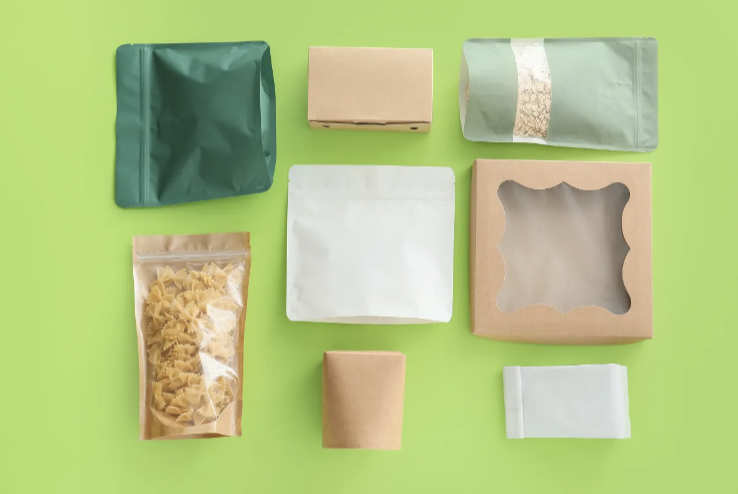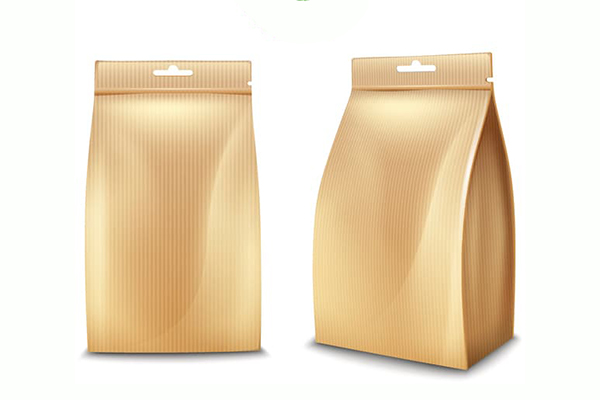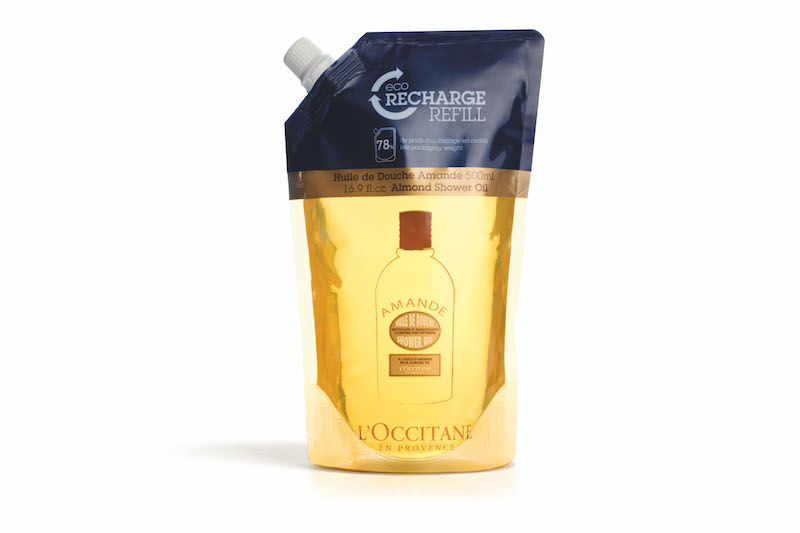Hello, I’m Allen, and for years, my factory has been at the forefront of the flexible packaging industry, working closely with business owners like Mark Thompson in the USA, Europe, and Australia. I’ve seen the shift firsthand. Brands are no longer just asking for durable, attractive packaging; they’re demanding sustainable solutions. The conversation has moved beyond simple plastic to a world of innovative, eco-friendly alternatives. This article is for you, the decisive business leader who needs to understand the landscape of biodegradable packaging. We will explore the different materials for packaging, demystify terms like "compostable" and "recyclable," and provide the insights you need to make the best choice for your product, your brand, and the planet. This is more than just a trend; it’s the future of responsible business.
What Exactly Is Biodegradable Packaging?
So, what does "biodegradable" truly mean? It’s a term you see everywhere, but the specifics can be fuzzy. At its core, biodegradable packaging is made from materials that can be broken down by living organisms, like bacteria and fungi, over time. The idea is simple: instead of sitting in a landfill for hundreds of years like traditional plastic, these materials decompose and return to the earth. Biodegradable means the packaging material will eventually break apart and disappear back into the natural environment.
However, "over time" is the key phrase here. There isn’t a strict, universal timeline. Some materials are biodegradable in a few months, while others might take years. This ambiguity is why it’s so important to understand the specific packaging material you’re considering. The environment where the breakdown happens also matters immensely. Some materials need the specific conditions of an industrial composting facility to decompose effectively, while others can break down in a home compost pile or even in the soil. The goal is to move away from the linear "take-make-waste" model of conventional plastic packaging toward a circular system where materials are reused or returned safely to the biosphere.
From my perspective as a manufacturer, the promise of biodegradable materials is enormous. We work with various polymers and films to create everything from stand-up pouches to cosmetic wraps. The challenge—and the opportunity—is to create biodegradable packaging that performs just as well as its traditional counterparts. It needs to protect the product, provide a great canvas for branding, and meet consumer expectations for convenience and quality, all while fulfilling its end-of-life promise to biodegrade without harming the environment.
How Do Biodegradable and Compostable Packaging Differ?
This is one of the most common questions I get from clients, and it’s a critical distinction. While all compostable packaging is biodegradable, not all biodegradable packaging is compostable. Think of it this way: "biodegradable" is a broad category, while "compostable" is a very specific, high-performance subset.
- Biodegradable: As we discussed, this means a material breaks down into natural elements. However, the process can take a long time and sometimes leaves behind trace residues. There are no official time limits or regulations on the term "biodegradable" alone, which can lead to "greenwashing."
- Compostable: This is a much more defined term. For a packaging material to be certified as "compostable," it must break down in a specific timeframe (usually 90-180 days) in a composting environment, leaving behind no toxic residues. The resulting organic material, called humus or compost, is nutrient-rich and can be used to fertilize soil. There are certifications, like ASTM D6400 in the US and EN 13432 in Europe, that products must meet to be labeled as compostable. This ensures the materials meet strict standards.
The key takeaway for a business owner is this: compostable packaging offers a clear, verifiable end-of-life solution. If your customers have access to industrial composting or even home composting, this packaging option can be a fantastic story of true circularity. Biodegradable and compostable packaging both aim for a better environmental outcome than conventional plastic, but compostable materials provide a higher level of assurance and a more beneficial end product.
What Are the Main Types of Biodegradable Materials for Packaging?
The world of sustainable packaging material is expanding rapidly. Gone are the days when paper was the only alternative to plastic. Today, we have a range of innovative, plant-based materials at our disposal. As a factory owner, I’ve had the opportunity to work with many of these, testing their durability, printability, and performance. Here’s a look at some of the most common types of biodegradable options.
| Packaging Material | Source | Key Features | Best For |
|---|---|---|---|
| Starch-Based Polymers | Corn, potatoes, tapioca | Inexpensive, versatile, can be made into loose-fill (like biodegradable packing peanuts) or rigid containers. | Food service, loose-fill packaging, single-use items. |
| PLA (Polylactic Acid) | Corn starch, sugarcane | Acts and looks like traditional plastic (clear and rigid). Requires industrial composting. | Food containers, clear cups, cosmetic packaging, 3D printing. |
| PHA (Polyhydroxyalkanoate) | Produced by microbes | Can biodegrade in a wider range of environments, including soil and marine settings. More expensive. | Medical applications, food packaging, single-use cutlery. |
| Molded Pulp | Recycled paper, cardboard, bamboo | Strong, durable, and easily molded into various shapes. Think egg cartons. | Protective packaging, food trays, drink carriers. |
| Mushroom Packaging | Mycelium (mushroom roots) | Grown, not manufactured. Binds agricultural waste (like hemp husks) into a solid, protective shape. Home compostable. | Protective packaging for electronics, furniture, wine bottles. |
| Seaweed Packaging | Algae | Edible, highly soluble, and rapidly renewable. An exciting emerging packaging material. | Sachets for sauces or drinks, dissolvable films, coatings. |
These biodegradable materials for packaging offer businesses a wealth of choices. The best biodegradable packaging for your company will depend on your product’s specific needs, your brand’s sustainability goals, and your customers’ access to disposal options like composting facilities. For example, a 100% green plastic bag might be made from a PHA polymer, offering a great alternative to traditional polyethylene.
Are Bioplastics like PLA a Truly Sustainable Packaging Option?
Bioplastics are a hot topic. They represent a significant step away from fossil fuel-based plastic, as they are derived from renewable resources like corn starch or sugarcane. PLA (Polylactic Acid) is the most common of these, often seen in clear food containers and cups. It looks and feels so much like traditional plastic that it’s an easy switch for many companies. But is it the perfect sustainable packaging solution? The answer is nuanced.
On the plus side, PLA has a lower carbon footprint during production compared to petroleum-based plastic. It’s made from a renewable resources, which is a huge win. However, its end-of-life story is complex. PLA is a compostable material, but it only breaks down efficiently in the high-heat environment of an industrial composting facility. If it ends up in a standard landfill, it can take as long as regular plastic to decompose, and it can release methane, a potent greenhouse gas. Worse, if a consumer mistakenly puts it in the recycle bin, it can contaminate the entire stream of traditional recyclable plastics (like PET), rendering the whole batch unusable.
So, my advice to clients like Mark is this: PLA can be an excellent choice, but only if you have a closed-loop system or if you are certain your customers have access to and will use industrial composting. It requires consumer education. You need to clearly label the packaging is made from PLA and provide instructions on how to dispose of it correctly. Without that last step, the environmental benefits can be lost. It’s a powerful polymer, but its success hinges on proper disposal.
What Are the Real Benefits of Biodegradable Packaging for Businesses?
Switching to biodegradable packaging materials is more than just an environmental decision; it’s a strategic business move. I’ve seen brands in North America and Europe gain a significant competitive edge by making this change. Here are the core benefits of biodegradable packaging that I emphasize to my clients.
- Enhanced Brand Image: Today’s consumers are savvy. They actively seek out brands that share their values. Using eco-friendly packaging demonstrates a commitment to sustainability, which can build powerful brand loyalty and attract new customers. It tells a story that goes beyond the product itself.
- Reduced Carbon Footprint: Many biodegradable materials, especially those derived from plant-based sources like corn or sugarcane, require less energy and water to produce than traditional plastic. This reduces your company’s overall environmental impact from the very start of the supply chain.
- Meeting Regulatory Demands: Governments around the world are implementing stricter regulations on single-use plastic packaging. By proactively adopting biodegradable packaging options, you future-proof your business against potential fines, bans, and taxes, staying ahead of the curve.
- Opening New Markets: Many retailers and distributors are prioritizing products with sustainable packaging. Making the switch can open doors to new partnerships and retail opportunities that might be closed to brands using conventional plastic.
It’s about aligning your business with the future. It shows you are not just selling a product but are also a responsible corporate citizen. This resonates deeply with modern consumers and can translate directly into a stronger bottom line.

How Can I Choose the Best Biodegradable Packaging for My Products?
Choosing biodegradable packaging isn’t a one-size-fits-all process. As a packaging professional, I guide my clients through a series of questions to find the perfect match. The goal is to balance performance, cost, and sustainability.
- What is your product? The first step is always product protection. Does your product need a moisture barrier (like for coffee) or an oxygen barrier (like for snacks)? Is it heavy, oily, or fragile? The packaging material must first and foremost protect the product inside. For example, a crisp cracker needs a different form of packaging than a liquid cosmetic.
- What is your brand’s story? Do you want a rustic, natural look, like that from molded pulp or kraft paper? Or do you need the sleek, modern feel of a biodegradable plastic like PLA? The material should reflect your brand identity. A company selling a 100% green skincare set would benefit from a package that visually communicates its eco-friendly ethos.
- Who is your customer and where do they live? This is crucial for the end-of-life plan. Do your customers have access to composting facilities? If not, a PLA-based package might not be the best biodegradable packaging choice. In that case, a home-compostable material or a widely recyclable option like paper might be better.
- What is your budget? Let’s be practical. Some biodegradable packaging materials are more expensive than traditional plastic. We need to find a packaging solution that works with your price point. Often, we can find efficiencies in design or logistics to help offset the cost of a greener raw material.
By working through these questions, we can narrow down the options from the wide world of materials for packaging to find the one that checks all the boxes for your specific needs.
Is Seaweed Packaging a Viable Future for the Industry?
Of all the new materials on the horizon, seaweed packaging is one of the most exciting. It addresses many of the core issues of sustainability. Seaweed is a type of algae, and it grows incredibly fast without needing fresh water, land, or fertilizer. This makes it a highly renewable resources. It actively absorbs CO2 from the ocean, helping to de-acidify the water.
The packaging is made by processing the algae into various forms. It can be turned into an edible, dissolvable film—perfect for holding single servings of a sports drink powder or a sauce. It can also be processed into a biodegradable plastic alternative or a paper-like material. Its biggest advantage is its end-of-life. Most forms of seaweed packaging are home compostable and can biodegrade in a marine environment in just a few weeks, leaving no harmful traces behind. This is a huge leap forward compared to other bioplastics that require specific industrial conditions.
Is it ready for mass adoption today? Not quite. The technology is still emerging, and the cost is higher than for mainstream materials. However, as packaging manufacturers like myself invest in research and as the scale of production increases, I am very optimistic. For certain applications, especially in the food industry, seaweed packaging could be a game-changer and a cornerstone of our future packaging strategies. It represents a truly regenerative form of packaging.
Is Recyclable Packaging a Better Choice Than Biodegradable Packaging?
This is a classic debate in the sustainability world: recyclable or biodegradable? The truth is, there isn’t one "better" option. The best choice depends entirely on the specific application and the available infrastructure.
Recyclable packaging, like glass, aluminum, and certain types of plastic and paper and cardboard, is designed to be collected, reprocessed, and made into a new product. This is a great model for a circular economy because it keeps the raw material in use for longer, reducing the need to extract new resources. The major challenge, however, is the recycling system itself. It relies on consumers to correctly sort their waste and on municipalities to have effective collection and processing facilities. Contamination is a huge problem, and in reality, a large percentage of what goes into the recycle bin still ends up in a landfill.

Biodegradable packaging, on the other hand, is designed to return to the biosphere. This is ideal for items that are likely to be contaminated with food waste, like coffee pods or greasy food wrappers, which can’t be recycled anyway. The challenge here, as we’ve discussed, is ensuring the material actually breaks down in the environment it ends up in.
My professional opinion is that a combination of both strategies is needed. For clean, easily sorted materials like beverage bottles or shipping boxes, recycling is a fantastic path. For items where recycling is impractical, a fully biodegradable or compostable material is the superior choice. The goal is to prevent waste from reaching the landfill, and both recyclable and biodegradable pathways can achieve that when used correctly.
How Does the Food Industry Benefit from Using Sustainable Packaging?
The food industry is one of the largest users of single-use packaging, and the pressure to find greener alternatives is immense. Using sustainable packaging is not just good PR; it solves real-world problems for food companies. I’ve worked with many food brands to develop innovative food packaging solutions.
One of the biggest wins is with food-soiled packaging. A greasy pizza box or a take-out container with leftover food cannot be recycled. The food waste contaminates the paper fibers. But if that carton or container is made from a compostable material, the entire thing—food scraps and all—can be thrown into a compost bin. This diverts a massive amount of waste from landfills and turns it into valuable compost.
Furthermore, new biodegradable films and coatings can extend the shelf life of fresh produce, reducing food waste, which is another huge environmental issue. Imagine a biodegradable food packaging wrap that helps your vegetables stay fresh for several extra days. We are also developing eco-friendly packaging for food that offers excellent barrier properties, protecting food from moisture and oxygen just as well as traditional plastic. From food containers to flexible pouches, the innovations in biodegradable packaging are allowing the food industry to deliver its products safely and sustainably.
What Challenges Come with Adopting Biodegradable Packaging?
While the future is bright for greener packaging, it’s important to be realistic about the challenges. As a factory that produces these materials, I believe in being transparent with my clients about the hurdles we need to overcome together.
- Cost: While the gap is narrowing, many biodegradable materials still have a higher unit cost than their petroleum-based counterparts. This can be a barrier for small businesses or products with very thin margins.
- Performance and Durability: Early generations of biodegradable plastics sometimes lacked the strength or barrier properties of conventional plastic. While modern materials offer significant improvements, extensive testing is required to ensure packaging is fit for purpose, especially for products requiring long shelf life or sturdy packaging.
- Infrastructure: The success of compostable packaging relies heavily on the availability of industrial composting facilities. In many regions, this infrastructure is still lacking, which can lead to these valuable materials ending up in a landfill.
- Consumer Confusion: The terms "biodegradable," "compostable," and "recyclable" can be confusing. Without clear labeling and public education, consumers may dispose of the packaging incorrectly, negating its environmental benefits. A compostable material thrown in the recycling bin is a contaminant, just as a recyclable item in a compost pile won’t break down.
Overcoming these challenges requires collaboration. It requires packaging manufacturers like me to continue innovating on cost and performance. It requires brands to invest in clear communication. And it requires governments and municipalities to invest in better waste management infrastructure. It’s a journey, but one we are well on our way to completing.

Key Takeaways for Your Business
Making the switch to sustainable packaging is a significant but rewarding step. As you consider your options, here are the most important things to remember:
- Know Your Terms: Understand the difference between biodegradable packaging and compostable packaging. Compostable offers a more specific, verifiable end-of-life benefit.
- Match the Material to the Product: The best biodegradable packaging is one that protects your product, fits your budget, and aligns with your brand’s story. There is no single perfect material for every application.
- Consider the Entire Lifecycle: Think beyond the shelf. Where will your customers dispose of the packaging? Their access to recycling or composting facilities is a critical factor in your decision.
- Educate Your Customer: Clear, simple instructions on the package are essential. Help your customers do the right thing by telling them exactly how to dispose of the packaging is used.
- Partner with Experts: Work with a knowledgeable packaging supplier who understands the nuances of different biodegradable materials. A good partner can guide you through the selection process, ensuring you find a packaging solution that is both effective and truly sustainable.
Post time: 08-06-2025

